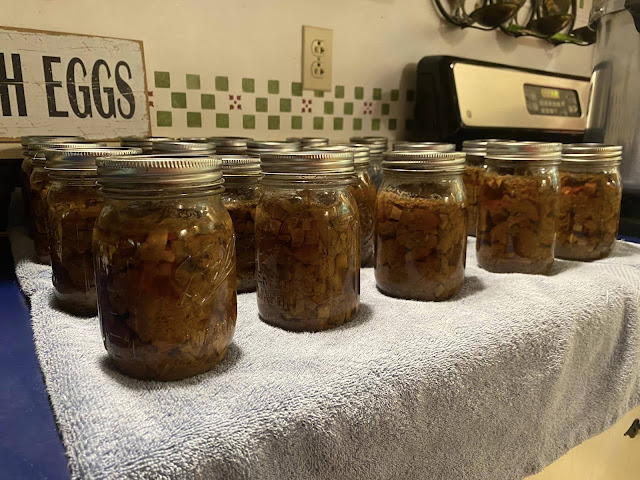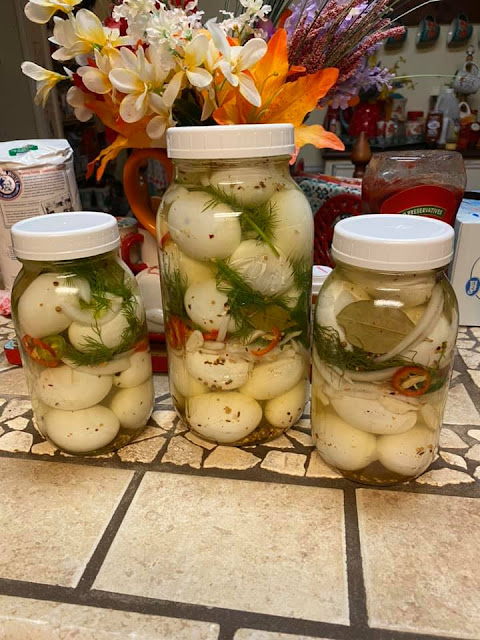Preserving the Bounty: A Tale of Success in Canning Venison
There's something deeply satisfying about preserving the flavors of the hunting season by canning venison. When you take the time to carefully process and seal your own jars of tender, succulent meat, you create a storehouse of deliciousness that can be enjoyed for months to come. In this article, we'll share a tale of success as we dive into the world of canning venison using an old, trusted recipe. Join us on this journey of preserving the bounty and relish in the satisfaction of a 100% success rate.
Canned Venison Recipe:
Ingredients:
- - Freshly processed venison (cut into desired pieces, e.g., cubes, strips)
- - Canning jars with lids (enough to accommodate the amount of venison)
- - Canning salt (follow the recommended amount based on jar size)
- - Optional: Seasonings and spices (e.g., garlic, onion, herbs) for added flavor
Directions:
1. Begin by ensuring that your venison is properly processed and prepared. Trim away any excess fat, connective tissue, or silver skin from the meat. Cut the venison into pieces that will fit comfortably into your canning jars.
2. Sterilize your canning jars and lids by washing them thoroughly in hot, soapy water. Rinse them well and place them in a large pot of boiling water for a few minutes. Remove the jars and lids from the boiling water, allowing them to air dry or drying them with a clean, lint-free cloth.
3. Fill each sterilized jar with the prepared venison, leaving appropriate headspace as recommended for the specific type of meat and jar size. Add any desired seasonings, spices, or canning salt to enhance the flavor of the venison. Be mindful of following safe canning practices and recommended salt ratios for preservation.
4. Wipe the jar rims clean with a damp cloth to ensure a proper seal. Place the lids on the jars and screw on the bands until they are snug but not overly tight.
5. Prepare your canner by filling it with water and bringing it to the appropriate temperature according to your altitude and canner type. Follow the instructions provided with your canner for specific guidance.
6. Carefully place the filled and sealed jars into the canner, ensuring they are fully submerged in the water. Allow the canner to reach the designated pressure for processing venison. Maintain the recommended pressure and processing time.
7. Once the processing time is complete, turn off the heat and let the canner cool naturally. Avoid rushing the cooling process as it can affect the seal and safety of the canned venison.
8. After the canner has cooled, carefully remove the jars and place them on a clean, dry surface. Allow them to cool undisturbed for several hours or overnight.
9. Check the seals on the cooled jars by pressing down on the center of each lid. If the lid springs back, the jar did not seal properly and should be refrigerated or reprocessed. Sealed jars can be stored in a cool, dark pantry for an extended period.
10. When you're ready to enjoy the preserved venison, open a jar, and savor the tender goodness. Use it in your favorite recipes, such as stews, chili, or hearty sandwiches. The flavors and convenience of your homemade canned venison will surely impress.
Canning venison is an art that connects us to our culinary roots and allows us to enjoy the fruits of our hunting endeavors throughout the year.
By following proper canning techniques and using trusted recipes, you ensure the safety and quality of your preserved venison.
As you gaze upon the rows of beautifully canned venison jars, take pride in your accomplishment. The nerves you felt during the canning process were well worth it, as you have achieved a 100% success rate. Each jar holds the promise of delicious meals and cherished memories shared with family and friends.
So, celebrate the preservation of your harvest, and let the flavors of the wild nourish your soul. May your journey into canning venison inspire others to embark on their own culinary adventures, preserving the bounty of nature with love and dedication.



















Comments
How many minutes cook the jar
ReplyDelete